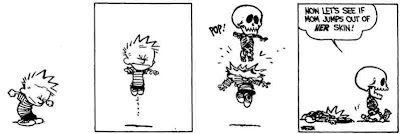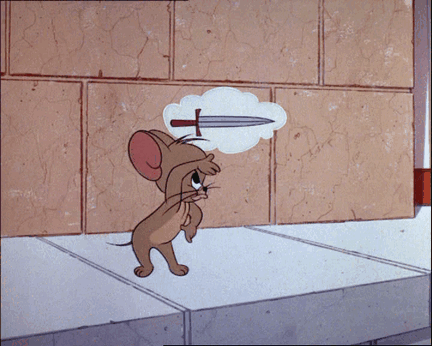I have covered laws in cartoons before. That one was specific to one cartoon series. Wile E. Coyote and his attempt to catch the Road Runner. Some of the laws below have already been covered in that piece but for consistency, they will be re-examined.
This set is from a piece written for Esquire in 1980, called O’Donnell’s Laws of Cartoon Motion.
This piece will examine each of the laws and make a commentary to them. Some may have to change, just by rewording them instead of removal.
Any body suspended in space will remain in space until made aware of its situation.
One of the mainstays of cartoons. Normally preceded by running off a cliff, running in a low lying mist or just occidentally taking a wrong turn. As soon as the character’s situation is noticed, the normal 9.81 m/s^2 will take over and the character will plummet to the ground, landing with a puff of dust.

Any body in motion will tend to remain in motion until solid matter intervenes suddenly.
Being fired from a cannon the character will continue until an object either appears from nowhere or is only noticed at the last second. The object could be a telephone pole, boulder, any vehicle, rockface or falling anvil.
Any body passing through solid matter will leave a perforation conforming to its perimeter.
Another classic from cartoons. Mostly seen in the Warner Bros. cartoons of the golden age. When a charcter needs to exit a building due to cowardly actions or by an explosive force – normally by a stick of TNT, they will leave a perfect cookie-cutter outline of themselves in the object.
The hole may have to use the first law depending on how the character goes through the wall.
The time required for an object to fall twenty stories is greater than or equal to the time it takes for whoever knocked it off the ledge to spiral down twenty flights to attempt to capture it unbroken.
This normally involves a priceless object being knocked off a shelf and through an open window. The pursuit is 9 times out of 8 unsuccessful but only by fractions of a second.
This can be also called the law of fractional gravity.
All principles of gravity are negated by fear.
Jumping out of your skin, spooky noises can also cause this effect in some of the more susceptible characters. When escaping from this situation, feet do not need to touch the floor to make the escape.

As speed increases, objects can be in several places at once.
This is normally seen in big fights, multiple limbs can appear from the fog of battle. This can also be seen when characters are running at an enormous speed, or just about to.
Certain bodies can pass through solid walls painted to resemble tunnel entrances; others cannot.
This is mostly used by the great painter of landscapes, Wile E. Coyote. Normally, the painter is the predator and the prey is the one who can defy physics by the beauty of the art.
Necessity plus Will provokes spontaneous generation.
As seen in the below image, if required, an object can be generated at will. Be that knives to be thrown, pies, a taxicab or disguise. Normally this requires an object, a bag, to pull the objects from. Occasionally, as we can see below, this can be generated from thin air. That one is uncommon but can still be used.

Any violent rearrangement of feline matter is impermanent.
This is the one that I have to disagree with. It isn’t only cats that have this ability in cartoons. It does seem that they are shown to have this effect. It may just be down to the fact that there are a lot of cats in cartoons.
This is the ability to survive being sliced, diced, exploded, fed through a mangle or any other possible injury. After this has happened, and a suitable period of self-pity, the rearrangement will be performed. This an also be the end of a scene but even so we will see the mangled re-appear back to normal then.
Everything falls faster than an anvil.
This is, probably, the most flexible of the laws. Yes, everything does fall faster than the ACME anvil, unless… The unless is all down to comedic timing. If the anvil needs to fall faster then it will. Normally to hit a precariously placed piece of rock that could become a see-saw to a parachute needs to hinder the character in a more humorous way than just having it removed
For every vengeance there is an equal and opposite revengeance.
All of the above laws, and commentaries, can be ignored if the plot requires it. The animator needs a quick way out of a scene, or just for comedic effect.
Everything can be negated if it’s funnier that way!








